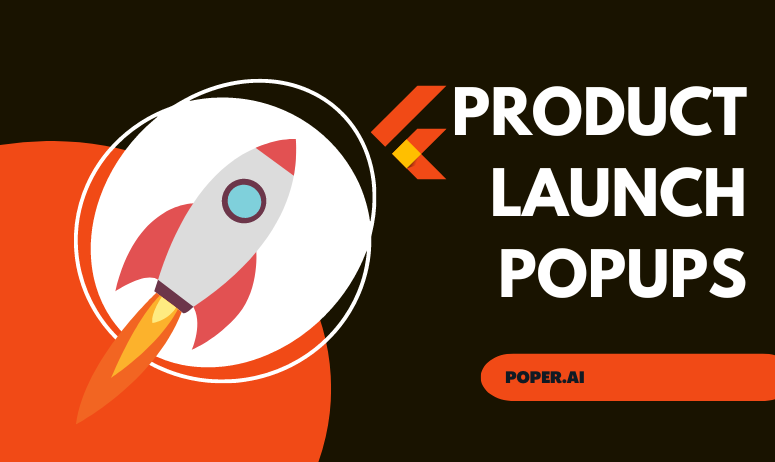Launching a new product is a pivotal moment for any business. It’s not just about unveiling a new item; it’s about capturing the market's attention, generating excitement, and setting the stage for long-term success. According to a study by Nielsen, 85% of new consumer products fail within their first year. This staggering statistic underscores the importance of a well-executed product launch strategy.
A successful product launch sets the tone for your product's future success and can be the difference between a flop and a market leader.
Popups play a crucial role in product launches by directly engaging website visitors and converting them into potential customers. When used effectively, popups can drive higher engagement rates, capture valuable leads, and ultimately boost sales. They serve as a direct communication channel that can highlight new product features, offer exclusive deals, and create a sense of urgency among visitors.
Key Benefits of Using Popups for Product Launches:
Increased Visibility: Popups ensure that your new product gets noticed by all website visitors.
Lead Generation: Collect email addresses and build a list of interested customers.
Enhanced Engagement: Interactive popups keep visitors engaged and reduce bounce rates.
Immediate Feedback: Gather instant feedback from visitors about your new product.
4 Types of Product Launch Popups
1. Announcement Popups
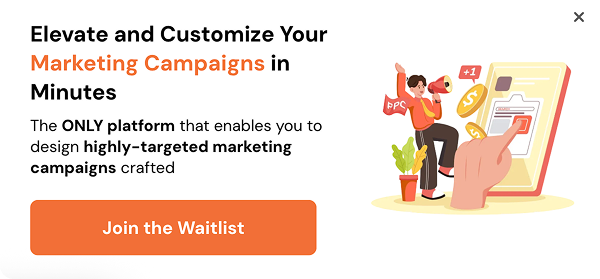
These popups serve as the official announcement of your new product. They can include brief product descriptions, images, and a call-to-action (CTA) to learn more or make a purchase.
2. Teaser Popups
Teaser popups create anticipation by offering a sneak peek of the new product before its official release. They can include countdown timers, preview images, and options to sign up for early access.
3. Countdown Popups

Countdown popups build urgency by showing a timer counting down to the product launch. This type of popup is effective in creating a sense of excitement and prompting visitors to act quickly.
4. Exclusive Access Popups
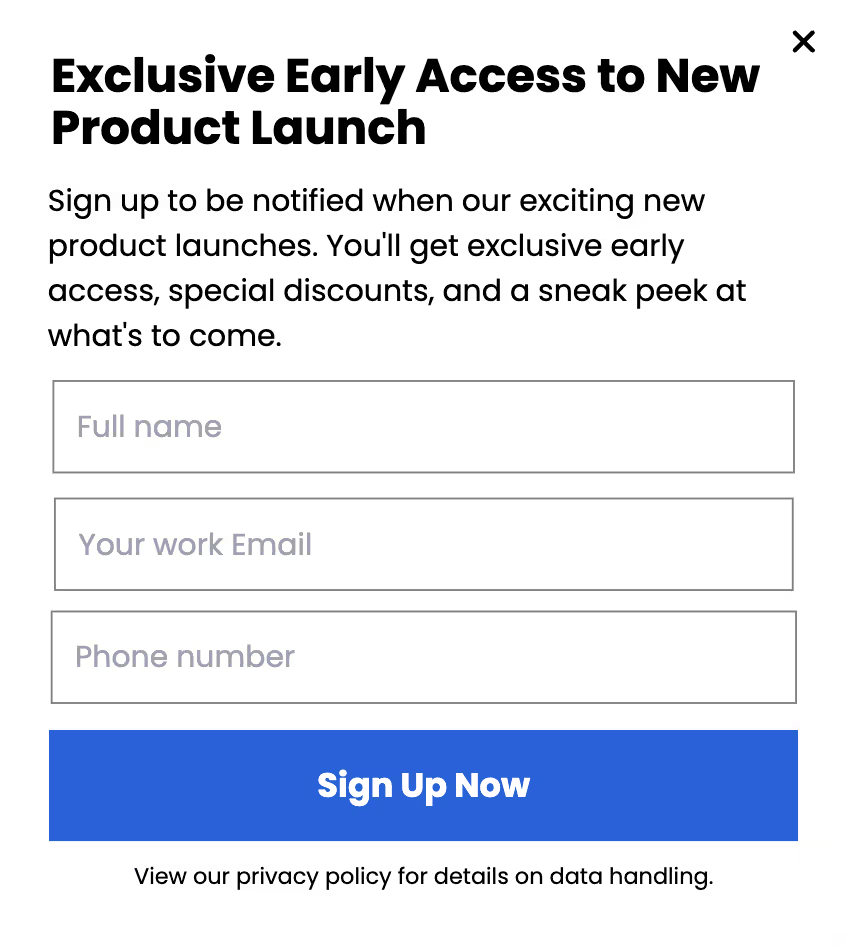
These popups offer exclusive early access to the product for a select group of users, such as newsletter subscribers or loyal customers. They often include special offers or discounts to encourage immediate action.
Planning Your Product Launch Popup Strategy

Setting Clear Objectives
The first step in planning your product launch popup strategy is to set clear objectives. Determine what you want to achieve with your popups. Are you looking to build an email list, drive sales, create buzz, or gather feedback? Having clear goals will help you design more effective popups.
Identifying Your Target Audience
Identify who your target audience is for the product launch. This involves understanding the demographics, preferences, and behaviors of your potential customers. Tailoring your popups to resonate with your target audience increases their effectiveness.
Selecting the Appropriate Popup Type
Based on your objectives and target audience, select the most appropriate type of popup. For instance, if your goal is to create buzz, a teaser popup with a countdown timer might be the best choice. If you want o drive immediate sales, an exclusive access popup with a discount offer could be more effective.
Designing Effective Product Launch Popups
Visual Design Principles
Color Schemes
Choose color schemes that align with your brand and product. Colors should be visually appealing and draw attention to the popup without being overwhelming.
Images and Graphics
Use high-quality images and graphics to showcase your product. Visual elements should be clear, professional, and relevant to the product being launched.
Typography
Select fonts that are easy to read and consistent with your brand's style. Headlines should be bold and eye-catching, while body text should be concise and legible.
Crafting Compelling Copy
Headlines
Write headlines that grab attention and clearly convey the value of your product. Use powerful, action-oriented words to entice visitors to learn more or take action.
Body Text
Keep the body text concise and focused on the benefits of the product. Highlight key features and use bullet points to make information easy to digest.
Call-to-Action (CTA)
The CTA is crucial for driving conversions. Make sure it stands out and clearly instructs the visitor on what to do next, such as "Sign Up Now," "Get Early Access," or "Buy Now."
User Experience Considerations
Ensure that your popups are user-friendly and do not disrupt the overall website experience. Popups should load quickly, be easy to close, and work seamlessly on both desktop and mobile devices.
Timing and Placement of Product Launch Popups
Optimal Timing for Popups
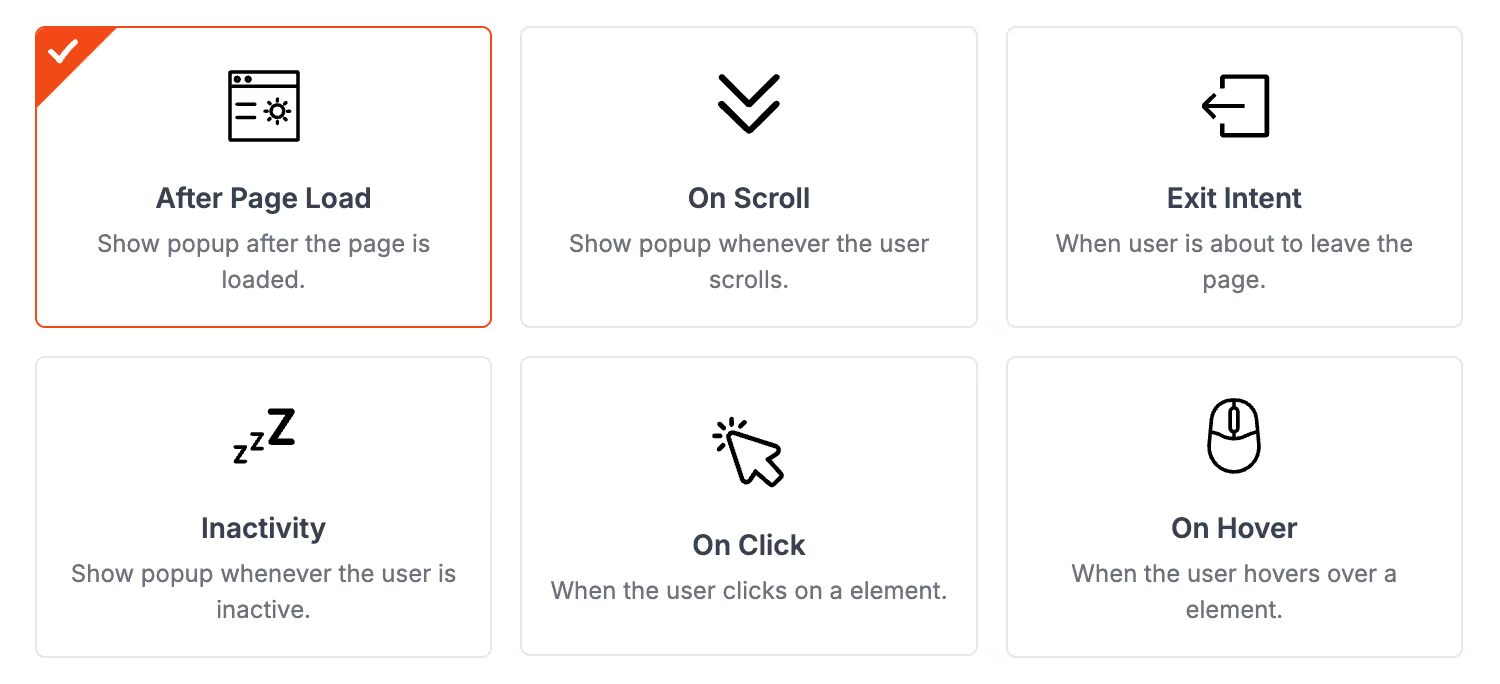
Exit-Intent Popups
These popups appear when a visitor is about to leave the website, providing a last opportunity to engage them. Use exit-intent popups to offer special deals or encourage sign-ups.
Timed Popups
Timed popups appear after a visitor has spent a certain amount of time on the page. This ensures that the visitor has had enough time to understand the context before being presented with the popup.
Scroll-Triggered Popups
These popups appear after a visitor has scrolled a certain percentage of the page. They are effective in capturing the attention of engaged visitors who are already interested in your content.
Strategic Placement on Your Website
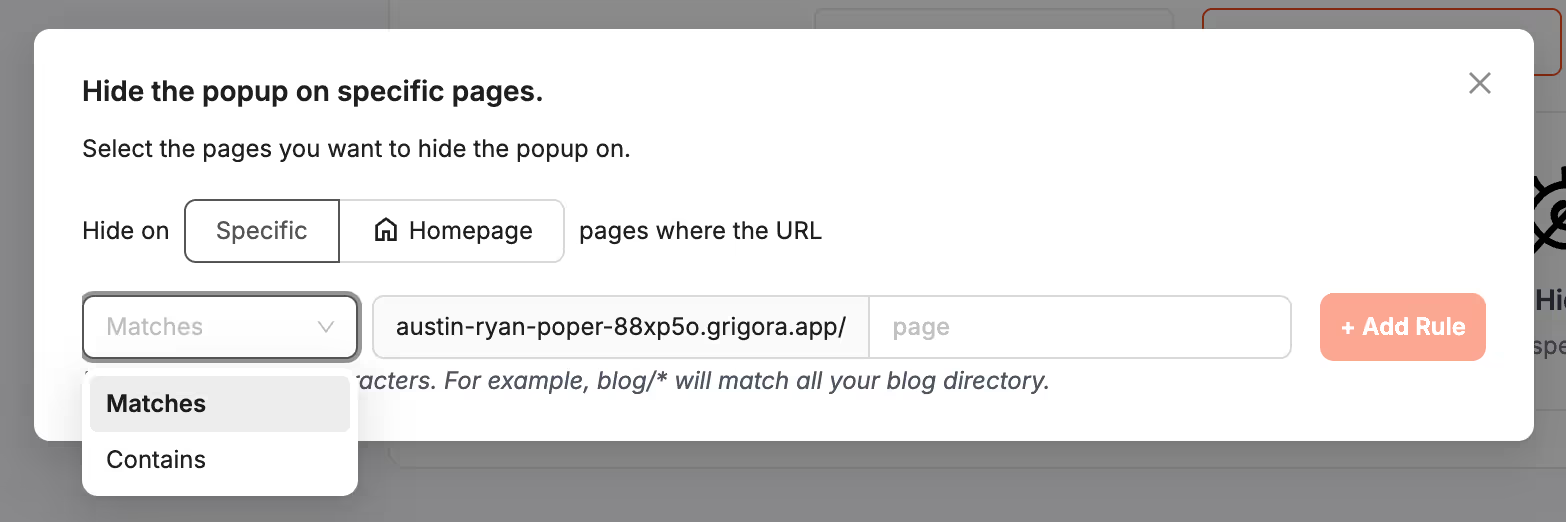
Homepage
Place popups on your homepage to ensure maximum visibility for your new product. This is particularly effective for broad announcements and promotions.
Product Pages
Popups on product pages can provide additional information, special offers, or direct visitors to related products. They are ideal for driving immediate purchases.
Blog Posts
Use popups in blog posts to promote relevant products or encourage readers to sign up for more information. This can be particularly effective if the blog content is related to the new product.
Frequency and Duration
Determine how often and how long to display your popups. Avoid bombarding visitors with too many popups, and ensure that the duration is sufficient to capture attention without becoming annoying.
Personalization and Targeting
Personalization Techniques
Use personalization techniques to make your popups more relevant to individual visitors. This can include addressing the visitor by name, showing products they have previously viewed, or offering personalized recommendations.
Behavioral Targeting
Behavioral targeting involves displaying popups based on the actions and behaviors of visitors. For example, you can show different popups to new visitors versus returning visitors, or to visitors who have added items to their cart but not completed the purchase.
Geolocation Targeting
Geolocation targeting uses the visitor's location to deliver personalized messages. This can include location-specific offers, language preferences, or promotions relevant to a specific region.
A/B Testing and Optimization
Conduct A/B testing to compare different versions of your popups and determine which performs better. Use the insights gained from testing to continuously optimize your popups for maximum effectiveness.
How to Create Product Launch Popups in Poper
Getting Started with Poper
To get started with Poper, visit the Poper website and sign up for an account. Once you’ve signed up, log in to access the dashboard.
Familiarize yourself with the Poper dashboard. Here, you can manage your popups, access templates, and view analytics. The user-friendly interface makes it easy to navigate and find the tools you need.
To start creating, Click "+New Popup"
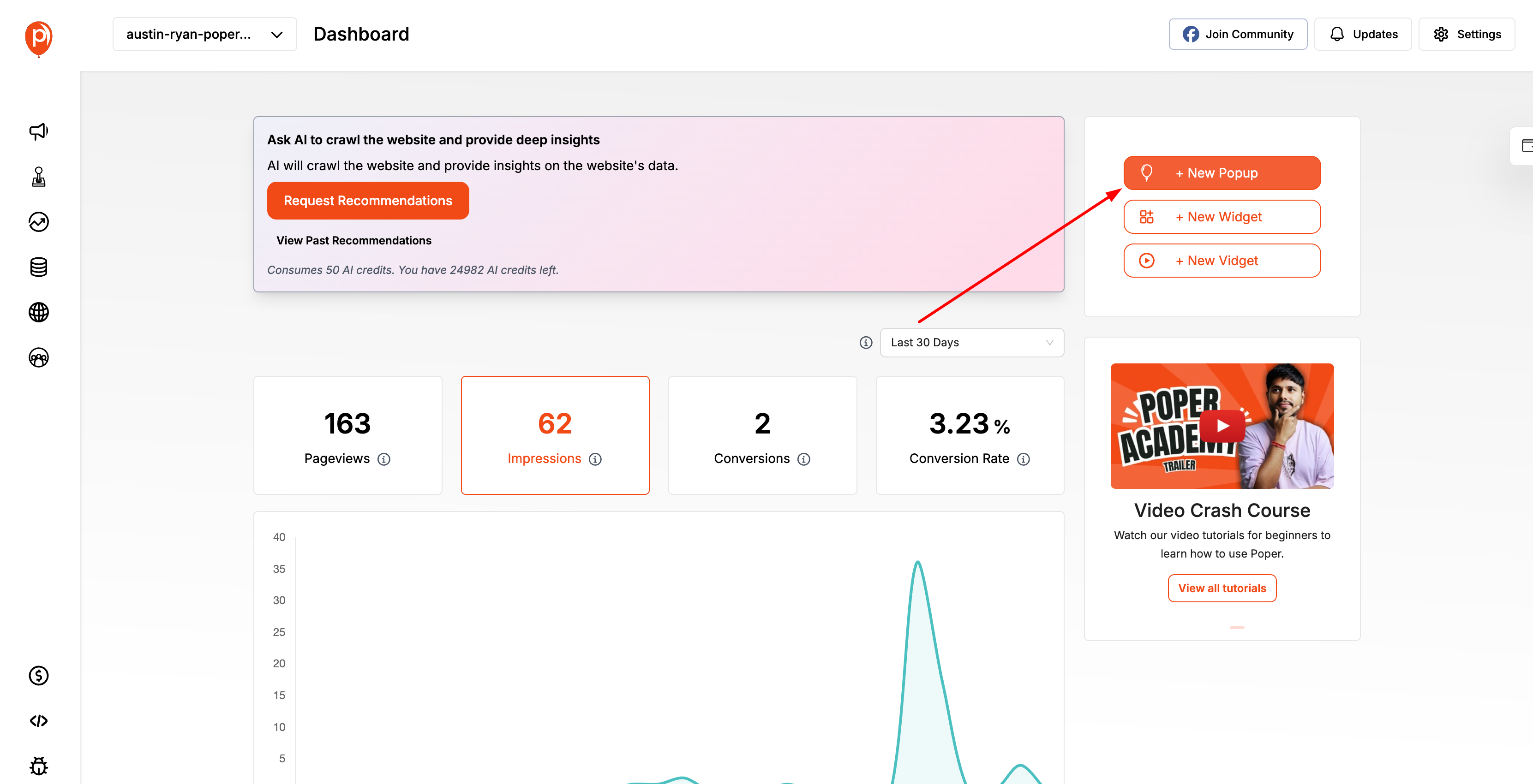
Designing Your Popup
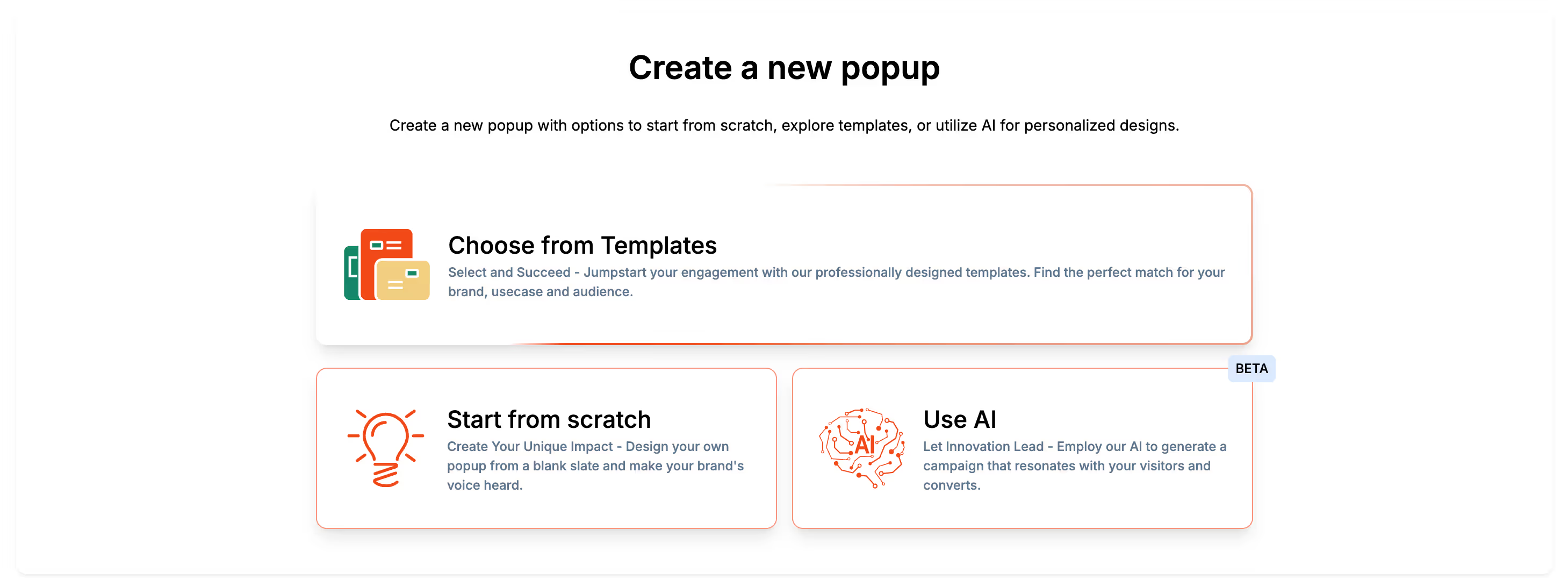

Poper offers a variety of customizable templates. Choose a template that aligns with your product launch goals and brand aesthetics.

Customize the design elements of your popup, such as colors, fonts, and images. Ensure the design is visually appealing and consistent with your brand.
Write compelling copy for your popup, focusing on the value proposition of your new product. Add a clear and persuasive call-to-action that encourages visitors to take the desired action.
Setting Up Triggers and Targeting
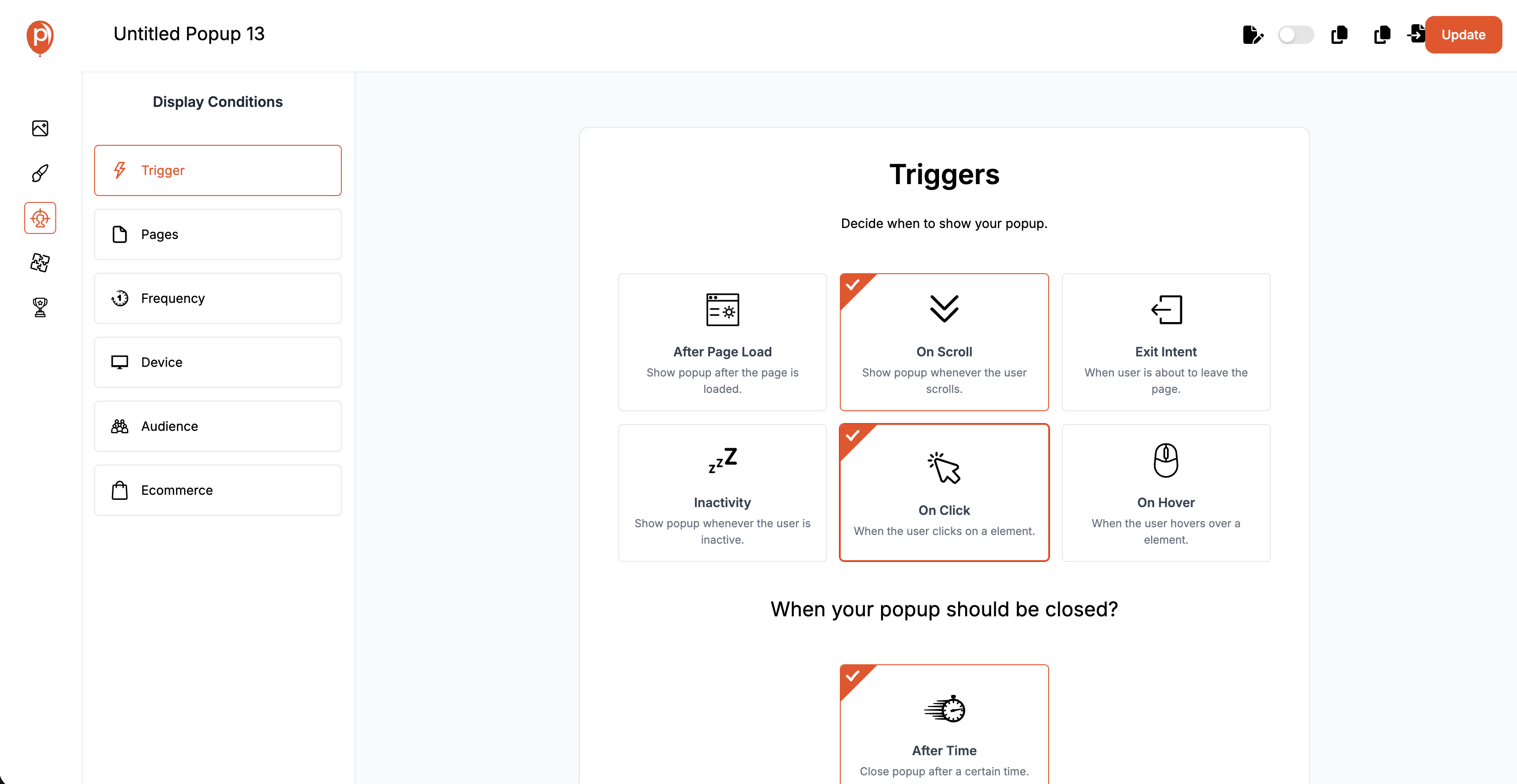
Set up the timing for your popup to appear at the optimal moment, such as on exit intent or after a specific time on page. This ensures your popup is seen without disrupting the user experience.
Define your audience segments to ensure your popup reaches the right visitors. Poper allows you to target based on behaviors, demographics, and more.
Implementing Advanced Targeting
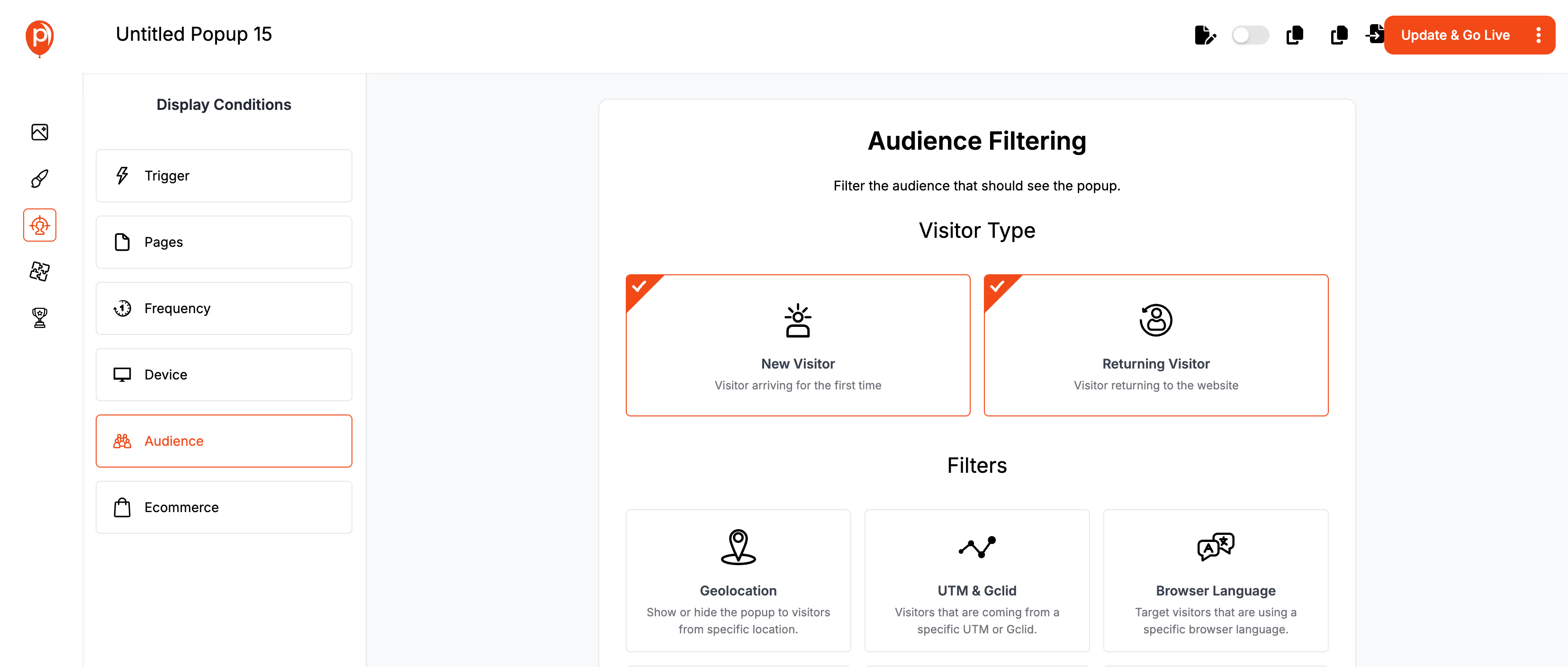
Use Poper’s advanced targeting options, such as geolocation targeting and behavioral triggers, to deliver personalized and relevant popups.
Integrating with Marketing Tools

Integrate Poper with your email marketing platform to seamlessly capture email addresses and grow your list. This integration allows for automated follow-up emails and targeted campaigns.
Connect your social media accounts to Poper to promote your popups across different channels. This helps drive traffic to your website and increases the visibility of your new product.
Monitoring and Optimizing Performance
Use Poper’s built-in analytics to track key metrics such as conversion rates, click-through rates, and engagement. This data provides insights into the effectiveness of your popups.
FAQs
What are the best practices for designing product launch popups?
Best practices include creating visually appealing designs, crafting compelling copy, and ensuring a clear call-to-action. Personalization and strategic timing also play crucial roles in effectiveness.
How can I measure the effectiveness of my product launch popups?
Use key metrics such as conversion rates, click-through rates, and engagement metrics. Tools like Poper’s built-in analytics can help track and analyze these metrics.
What legal considerations should I keep in mind for popups?
Ensure compliance with regulations such as GDPR, respect user privacy, and adopt ethical marketing practices. Transparency and security are key.
How do I integrate popups with my existing marketing strategy?
Integrate popups with email marketing, social media, and content marketing to create a cohesive strategy. Use popups to capture leads, promote content, and drive traffic.
What are common mistakes to avoid with product launch popups?
Avoid overloading visitors with too many popups, ensure mobile optimization, and avoid intrusive designs. Focus on providing genuine value and maintaining a positive user experience.
Conclusion
Popups are powerful tools for promoting new product launches. By understanding the different types of popups, planning a strategic approach, designing engaging popups, and leveraging advanced targeting and personalization techniques, businesses can significantly enhance their product launch success.
We encourage you to start incorporating popups into your product launch strategy. With the right approach, popups can drive engagement, capture leads, and boost sales, ensuring your new product gets the attention it deserves.


